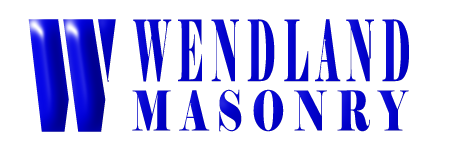Block masonry history
Concrete block
Blocks of cinder concrete (cinder blocks or breezeblocks), ordinary concrete (concrete blocks), or hollow tile are generically known as Concrete Masonry Units (CMUs). They usually are much larger than ordinary bricks and so are much faster to lay for a wall of a given size. Furthermore, cinder and concrete blocks typically have much lower water absorption rates than brick. They often are used as the structural core for veneered brick masonry, or are used alone for the walls of factories, garages and other industrial-style buildings where such appearance is acceptable or desirable. Such blocks often receive a stucco surface for decoration. Surface-bonding cement, which contains synthetic fibers for reinforcement, is sometimes used in this application and can impart extra strength to a block wall. Surface-bonding cement is often pre-coloured and can be stained or painted thus resulting in a finished stucco-like surface.
The primary structural advantage of concrete blocks in comparison to smaller clay-based bricks is that a CMU wall can be reinforced by filling the block voids with concrete with or without steel rebar. Generally, certain voids are designated for filling and reinforcement, particularly at corners, wall-ends, and openings while other voids are left empty. This increases wall strength and stability more economically than filling and reinforcing all voids. Typically, structures made of CMUs will have the top course of blocks in the walls filled with concrete and tied together with steel reinforcement to form a bond beam. Bond beams are often a requirement of modern building codes and controls. Another type of steel reinforcement, referred to as ladder-reinforcement, can also be embedded in horizontal mortar joints of concrete block walls. The introduction of steel reinforcement generally results in a CMU wall having much greater lateral and tensile strength than unreinforced walls.
CMUs can be manufactured to provide a variety of surface appearances. They can be colored during manufacturing or stained or painted after installation. They can be split as part of the manufacturing process, giving the blocks a rough face replicating the appearance of natural stone, such as brownstone. CMUs may also be scored, ribbed, sandblasted, polished, striated (raked or brushed), include decorative aggregates, be allowed to slump in a controlled fashion during curing, or include several of these techniques in their manufacture to provide a decorative appearance.[1]
“Glazed concrete masonry units are manufactured by bonding a permanent colored facing (typically composed of polyester resins, silica sand and various other chemicals) to a concrete masonry unit, providing a smooth impervious surface.”[2]
Glass block or glass brick are blocks made from glass and provide a translucent to clear vision through the block.

